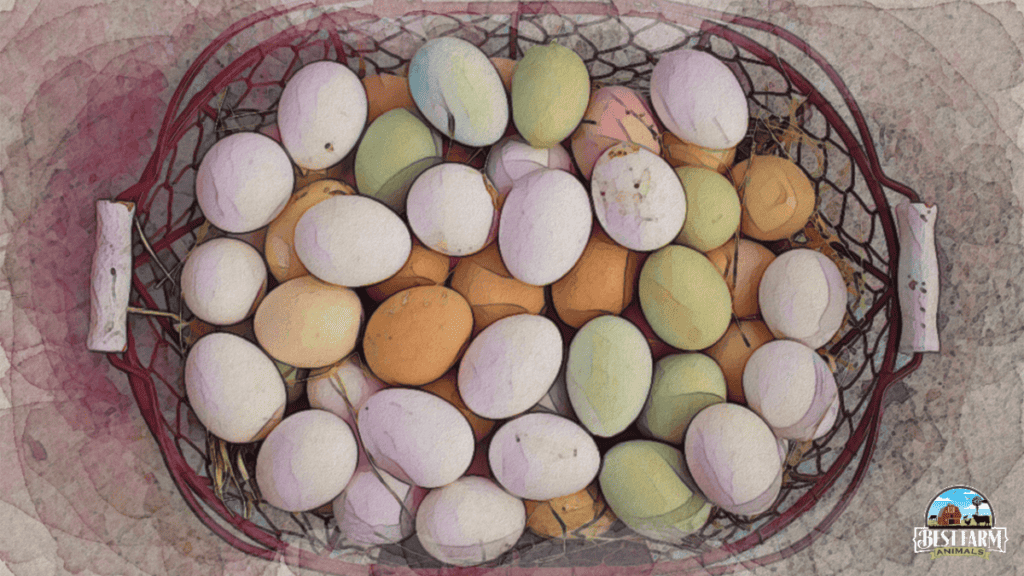As a dedicated chicken raiser, I have witnessed the incredible capabilities of certain chicken breeds that go above and beyond in their egg-laying prowess. Today, I invite you to delve into the fascinating world of chickens that lay an astonishing 300 eggs a year or more. These exceptional avian champions have captured poultry enthusiasts and farmers’ attention and admiration.
When it comes to selecting the ideal chicken breeds for egg production, it is essential to consider their productivity, temperament, and suitability for various climates and rearing conditions. In this article, we will explore the top contenders in the league of prolific egg layers, highlighting their remarkable qualities and their valuable contributions to the poultry industry.
What Chicken Lays the Most Eggs? Golden Comet, Lohmann Brown, Leghorn, Ancona, Australorp, Rhode Island Red, and Black Star chicken breeds, and hybrids are the highest egg producers in the poultry world. These seven chicken breeds are high egg-laying breeds—chickens that lay 300 eggs a year or more. A healthy normal hen can only produce up to 250 eggs in a year. At most, they can lay one egg a day.
But, egg-laying isn’t the only thing you want to know about when choosing a hen. Choosing a chicken that will thrive in your specific circumstances is also important. Be aware of which breeds do well in hot or cold climates.
You need to choose breeds that will do well in either confinement or free-range situations, depending on how you will raise your chickens.
You will also want to choose the right breed for the level of friendliness you desire. Some breeds are very good at family pets while others are more aggressive and standoffish.
Another thing to consider is whether or not you want to get a dual-purpose breed. Some high egg-laying breeds in this article are also great meat birds. This makes it more economical for smaller farms and backyard owners.
- Cold or Hot Climates
- Confinement or Free Ranging
- Friendly or Standoffish Temperament
- Hybrid or Heritage Breed Preferences
- Egg only or Dual Purpose Breeds
7 Super Chicken Breeds That Lay Over 300 Eggs Each Year
- 1. Ancona Chickens Lay Up To 300 Eggs
- 2. Australorp Chickens: Australian Egg Machines With 364 Eggs
- 3. Black Star Chickens Lay 5 Eggs Per Week
- 4. Golden Comet Chicken Can Produce Up To 6 Eggs A Week
- 5. Leghorn Chickens Lay 4 Eggs a Week or Over 300 a Year
- 6. Lohmann Brown as Best Egg Layer in Africa With Jumbo Eggs
- 7. Rhode Island Red Produces an Average of 300 Eggs a Year
- 8. Isa Brown Chickens Lay About 350 Eggs
- Chickens That Lay 300 Eggs a Year FAQs
1. Ancona Chickens Lay Up To 300 Eggs
Ancona Chickens can lay about 220-300 large, white eggs a year and can lay more eggs during winter months than Leghorns. That means about 5-6 eggs a week. These chickens start laying at about 5 months.
Anconas lay a large number of white eggs a year. They are medium-sized birds and back then, they would also be used for meat. They grow to about 2.7 Kg (6 lbs) for the cocks and 2 Kgs (4.5 lbs) for the hens. They are primarily used for eggs.

Photo Credit: Nkepaints
2. Australorp Chickens: Australian Egg Machines With 364 Eggs
Australorp Chickens are one of the highest egg producers of all the chicken breeds, which can lay between 250-300 medium light, brown eggs a year. They were bred as a dual-purpose bird, for both meat and eggs.
In 1902, an Australian college held an egg-laying contest. Australorps have laid as many as 364 eggs in 365 days in Australia without extra lighting. That high number of eggs isn’t average for the breed because average eggs have decreased over the decades.
Australorps make good mothers with average broodiness. Cocks can weigh up to 3.85-4.5 kg (8-10 lbs) and hens up to almost 2 kg (6-8 lbs). Even though they are a larger bird, they take confinement well.
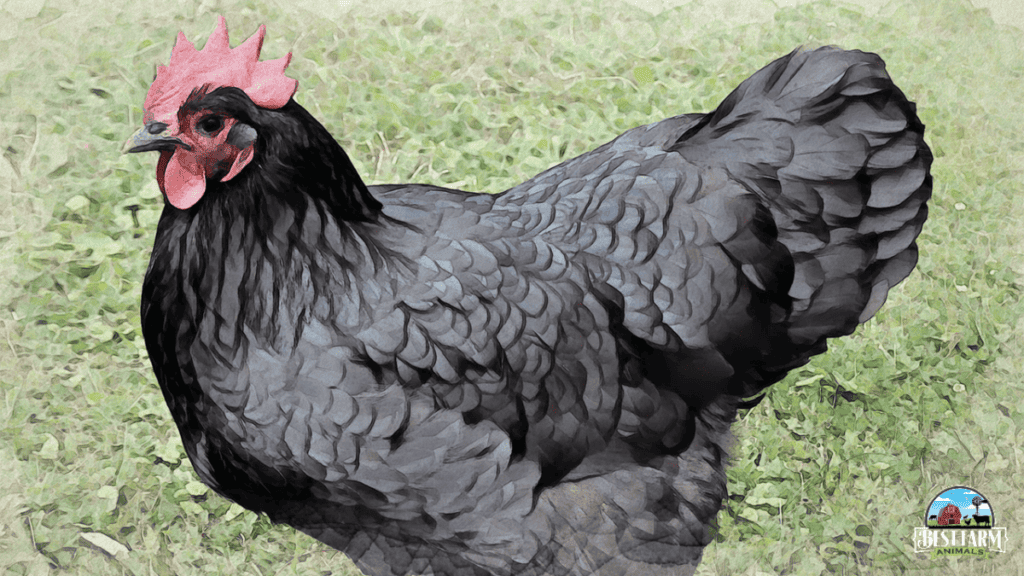
Photo Credit: Palauenc05
3. Black Star Chickens Lay 5 Eggs Per Week
Black Star hens lay about 5 eggs a week. That means about 250-300 extra-large, brown eggs a year. Their food-to-egg laying is a good ratio. Hens start laying at 6 months. Because they lay a lot of eggs, they can have reproduction issues and only lay well for about 2 years.
Black Star hens don’t typically get broody. They will continue to lay while other breeds molt and get broody.
Black Stars can be a good meat bird but are more often used for egg-laying. The roosters will grow to 7-8 lbs (3.5 kg). The hens will reach about 5 lbs (2.25 kgs) in about 20 weeks. They are medium-heavy birds.
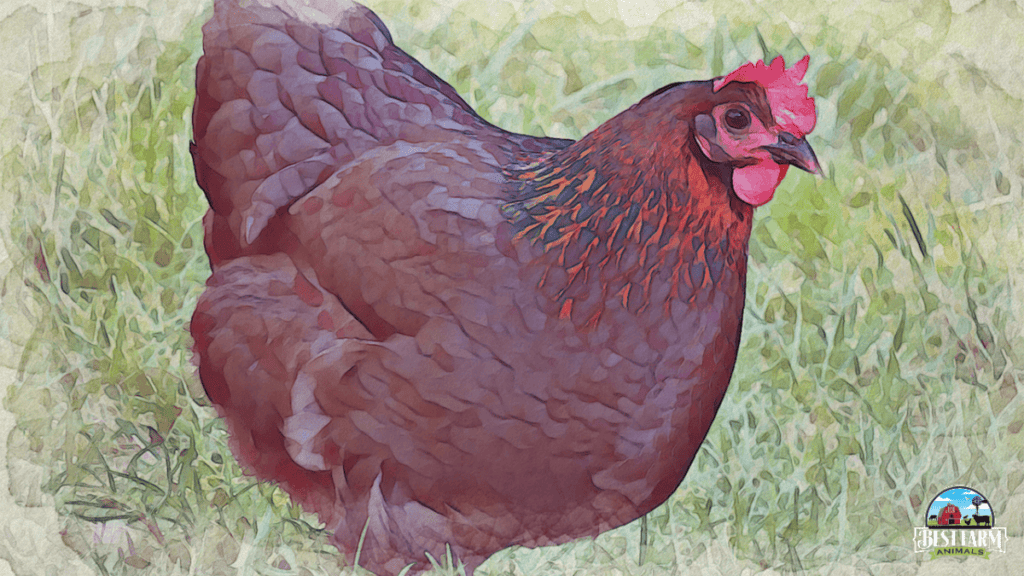
Photo Credit: Ameteurnithologist
4. Golden Comet Chicken Can Produce Up To 6 Eggs A Week
Golden Comet chickens are master egg layers, which can lay 5-6 eggs a week. In some cases, hens will lay an egg nearly every day. For the first two years, you can expect as many as 300-330 large to extra-large brown eggs a day. After that, the number of eggs will drop to about 250 eggs the third year.
Golden Comets only live about 4 or 5 years. Hens start laying eggs at about 16 weeks. The hens are not broody. They will get to about 4 lbs (1.8 kgs) and the rooster will max out at 6 lbs (2.2 kgs).
Comet chickens do well as layers but don’t not as meat birds because they are smaller chickens.
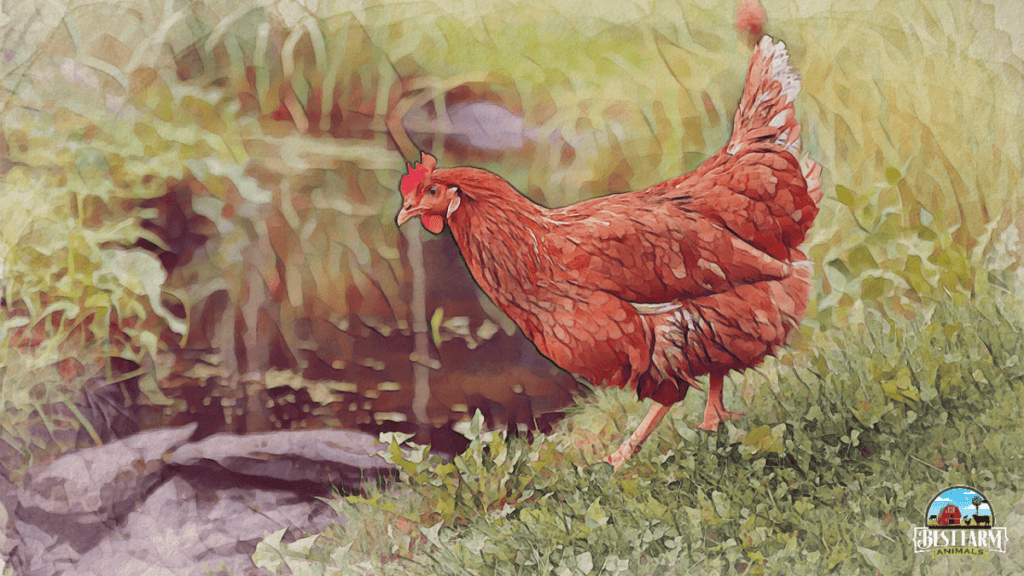
5. Leghorn Chickens Lay 4 Eggs a Week or Over 300 a Year
Leghorn Chickens will lay between 280-320 extra large, white eggs a year. They lay about 4 eggs a week all year long. Leghorns are the egg producers of the commercial industry. But, non-commercial leghorns are in a recovering status.
The English tried to breed a larger, dual-purpose bird, but Leghorns are still too skinny to be a good meat bird. They also have one of the best feed to egg conversion of all chickens. The mothers seldom go broody. They continue to lay eggs in years 3 and 4.
Roosters grow to about 7 lbs (3.2 kgs) and hens grow to 5.5 lbs (2.5 kgs).

Photo Credit: Shanthanu Bhardwaj Flickr
6. Lohmann Brown as Best Egg Layer in Africa With Jumbo Eggs
Lohmann Browns are one of the kings of egg layers. Hens lay strongly for two years, producing 6-7 large to jumbo-sized brown eggs per week. That averages to between 300 and 325 eggs a year. They lay year-round, making them a dependable layer.
Plus, Lohmann lay much quicker than other commercial breeds. Lohmann Browns start laying around 18 or 20 weeks. Some hens have been known to lay as young as 14 weeks. Meanwhile, roosters grow to about 4 pounds (1.81 kgs) and hens grow to about 3.5 lbs (1.6 kgs).
Lohmann Brown chickens are a hybrid that a German genetics company has created. They were bred using New Hampshire cocks and brown laying hens. The breed is very new and not technically a recognized breed yet. As a result, a high-production hen was born. Lohmann Browns are used extensively in South Africa. They have been called the “Best Chicken Of South Africa.”
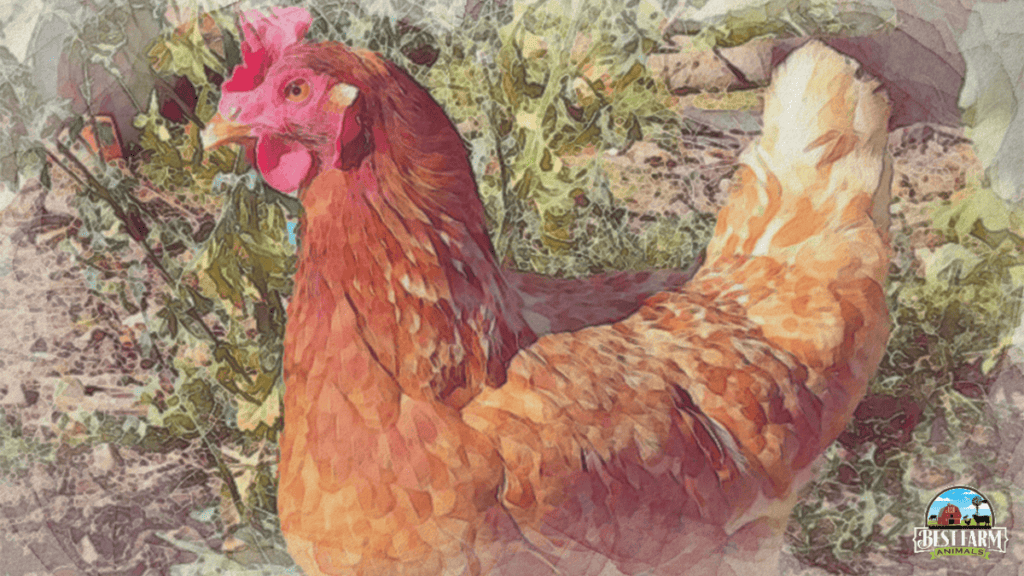
Photo Credit: Abrahami
7. Rhode Island Red Produces an Average of 300 Eggs a Year
There are two varieties of Rhode Island Red, the commercial variety and the heritage breed. The Rhode Island Red commercial variety usually lays about 5-6 times a week, even during the cold season. That means between 200-300 eggs a year.
The heritage breed will lay between 150-250 eggs a year. The eggs are a large, brown egg. The size of the eggs will get bigger as the hen grows older. The hens are rarely broody, but when they do, they are good mothers.
Rhode Island Reds are one of the most successful chicken breeds in the world. They are super popular.

Photo Credit: Evelyn Simak
8. Isa Brown Chickens Lay About 350 Eggs
The ISA Brown chicken is a highly productive egg layer and one of the most prolific brown egg layers available. Each hen can lay around 5 to 7 eggs per week and produces an average of 250 to 350 eggs per year, which is nearly one egg daily for an entire year.
Depending on their diet and overall care, Isa Brown hens remain productive and provide superior eggs for one to five years, with some hens continuing to lay eggs even in their seventh year. They start laying eggs as early as 16 weeks old, almost two months earlier than other layer breeds.
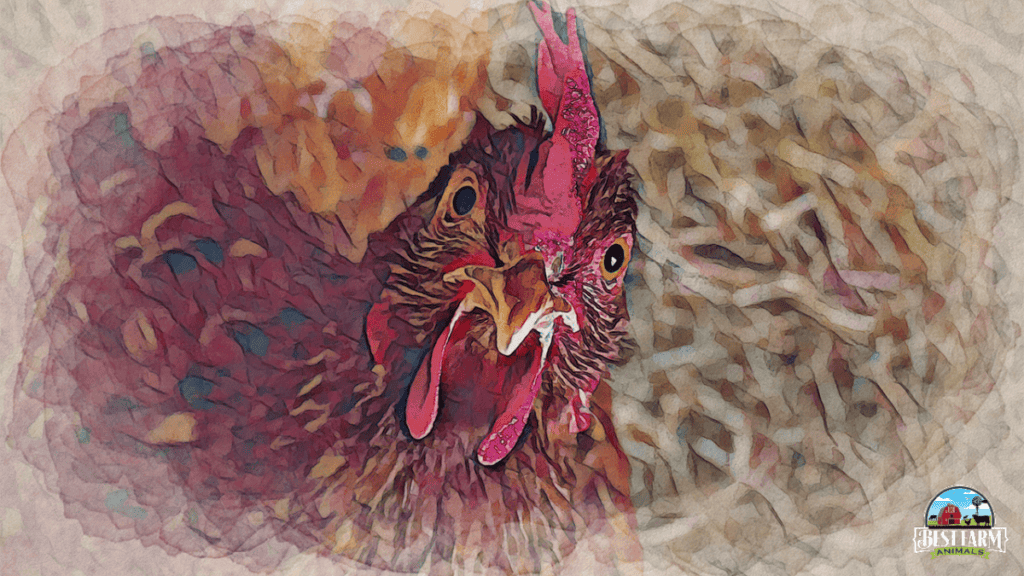
Chickens That Lay 300 Eggs a Year FAQs
Can a chicken lay 2 eggs a day?
It is possible for a chicken to lay two eggs in a day if they experience hormonal imbalances or extreme stress. This is also seen in young hens that are still maturing or is a sign that a hen is overfed. However, this is rare as it takes around 24 to 26 hours for a chicken to develop and lay a new egg.
Can chickens lay unlimited eggs?
Chickens can’t lay an unlimited amount of eggs. Biologically each breed has an estimated limit on how many eggs they can lay. There are prolific egg layers, such as the Isa Brown chicken, that have been cross-bred to produce more eggs than the average hen. However, every hen’s egg production will decrease as they age and they will stop producing eggs.

What chickens lay eggs the fastest?
Some chicken breeds are available that lay eggs the fastest (high-production layers). Holding the record is the White Leghorn hen which laid 371 eggs in a year. Other high-production breeds include the Plymouth Rock, Rhode Island Red, Sussex, and Australorp chicken. The amount of eggs laid depends on their breed and their overall health.
Conclusion
Each breed of chicken has different strengths. Below, I’ve listed the traits for each of these super egg layers so that you can quickly see which breeds would be best for you.
There are a few things to know about this chart:
Most chickens can handle cold weather ok if they have proper shelter and if their combs and wattles are taken care of. Sub-freezing temperatures put certain breeds at risk of frostbite.
The breeds that are listed as handling cold are at little risk of frostbite and need little extra care in the winter months
Also, most breeds can handle backyards and confinement if they are provided with enough square feet per bird (raising chickens). The birds that handle confinement best are those that tend to need less space and get stressed out less. They also tend to be less noisy and bother neighbors less.
And, while some breeds are much tamer and friendly to kids and owners than other breeds, all chickens tend to do better when handled from a young age and when they receive interaction from their owners on a daily, consistent basis.
Lastly, be sure to check out Other popular chicken breeds for eggs and which chickens are best to raise for meat birds.
| Breed | Hybrid / Heritage | Best Climate | Handles Confinement? | Good Forager / Free Range | Family Friendly Bird? | Broody? | # of Eggs A Year | Dual Purpose? |
| Ancona | Heritage | Hot & Cold | Not as well | Predator Aware, Excellent Forager | Flighty, Friendly | No | 220-300 white | No |
| Australorp | Heritage | Hot & Cold | Yes | Yes, prone to obesity | Shy, Gentle | Ave | 250-300 brown | Yes |
| Black Star | Hybrid | Hot & Cold | Yes, Quiet | Excellent | Friendly, Adaptable | Yes | 250-300 brown | Yes |
| Comet | Hybrid | Hot & Cold | Yes | Good Forager | Curious, Friendly | No | 300-330 brown | No |
| Leghorn | Both | Hot | Not as well | Yes | Nervous, High-strung | No | 310-330 white | No |
| Lohmann Brown | Hybrid | Hot & Cold | Yes | Average | Friendly | Ave | 300-320 brown | No |
| Rhode Island Red | Both | Hot & Cold | Yes | Excellent | Laid back, mellow | No | 200-300 brown | Yes |
Feature Image Photo Credit: woodleywonderworks Flickr
My Favorite Chicken and Duck Supplies
This list contains affiliate products. Affiliate products do not cost more but helps to support BestFarmAnimals and our goal to provide farm animal owners with accurate and helpful information.
Manna Pro Oyster Shell keeps eggs strong. Before I gave my chickens oyster shell, I had the oddest eggs, many with weak and irregular shells. Now, I don’t have an issue.
Layer Feed by Manna Pro. I like pellets rather than crumbles as my chickens eat them better and less gets wasted or scavenged by rodents. A good layer feed makes the difference in hens laying many more eggs.
My chickens love this mealworm treat, which gives added protein, something that’s great during molting and winter months.
There are many ways to feed and water your chickens. I like this food and water setup the best because it reduces waste, saves me time feeding and watering, and keeps the food fresh longer. Except, in the winter, I use a heated waterer. The only problem is the heated waterers need to be replaced every few years.
I love this chicken veggie hanger. It makes it easy to give your chickens produce from the garden and keep them occupied in the winter with a fresh head of lettuce.
These chicken toys are a hoot! They will help curb bullying and keep your chickens active, especially in the winter when hens tend to get more lethargic.

